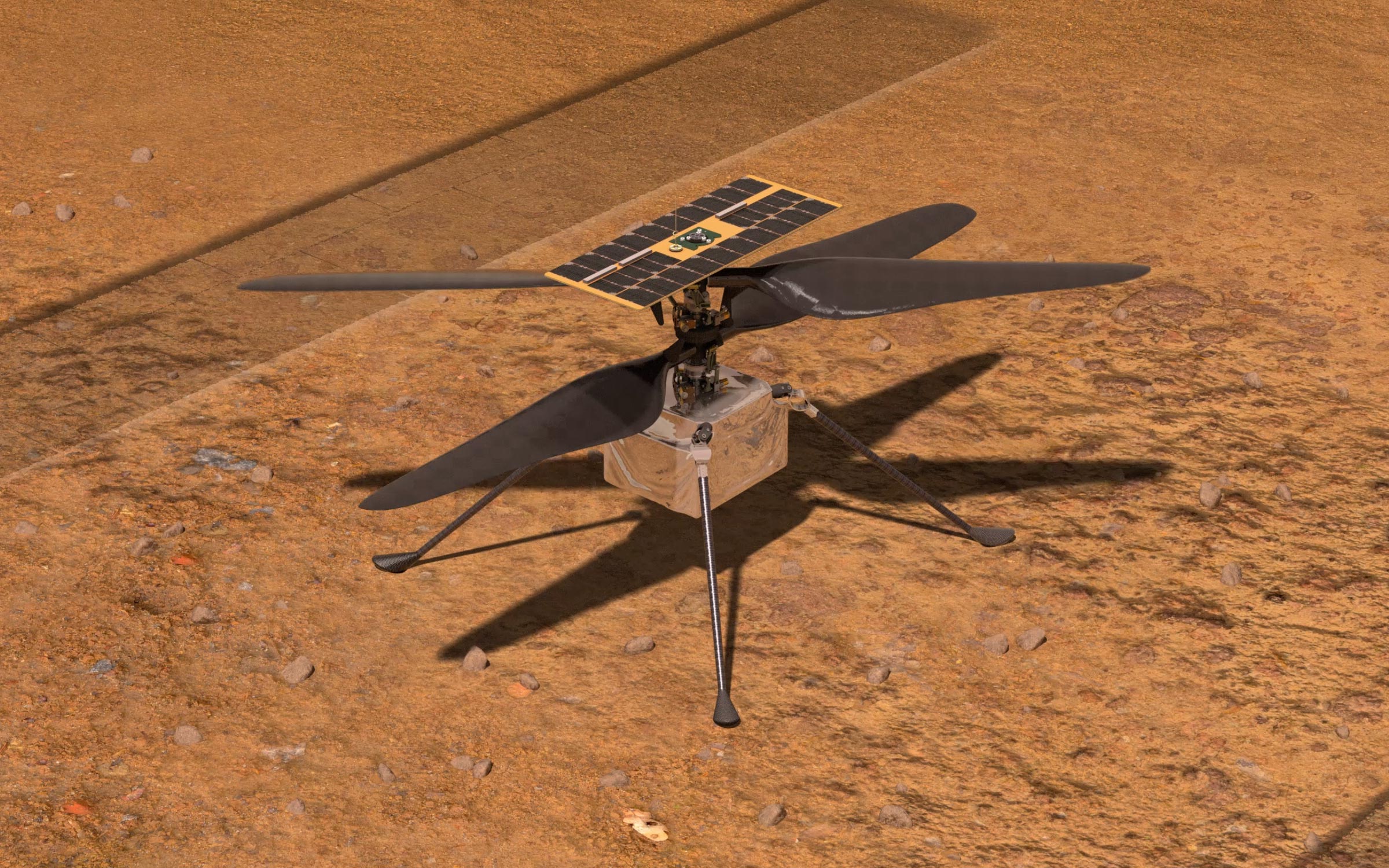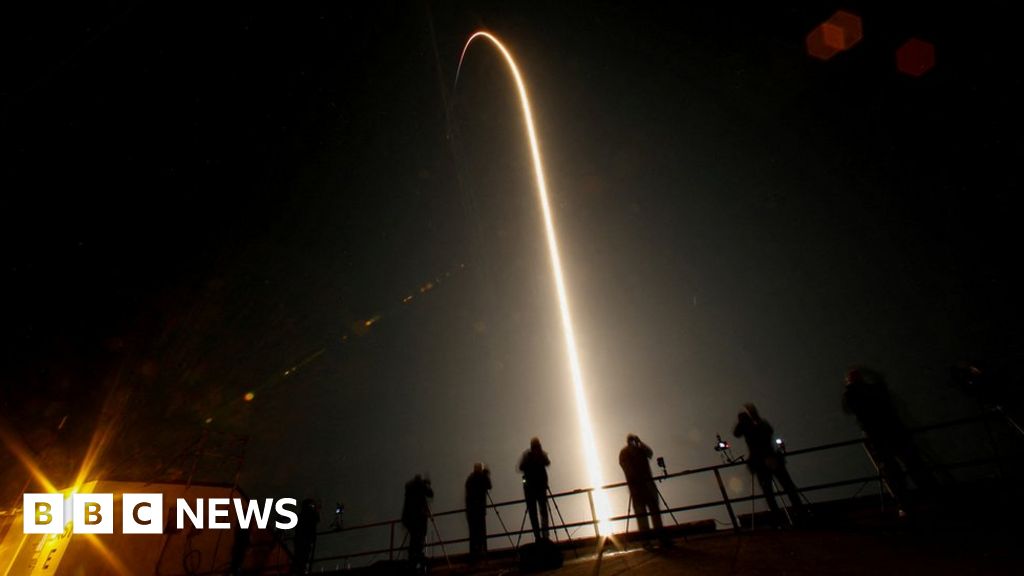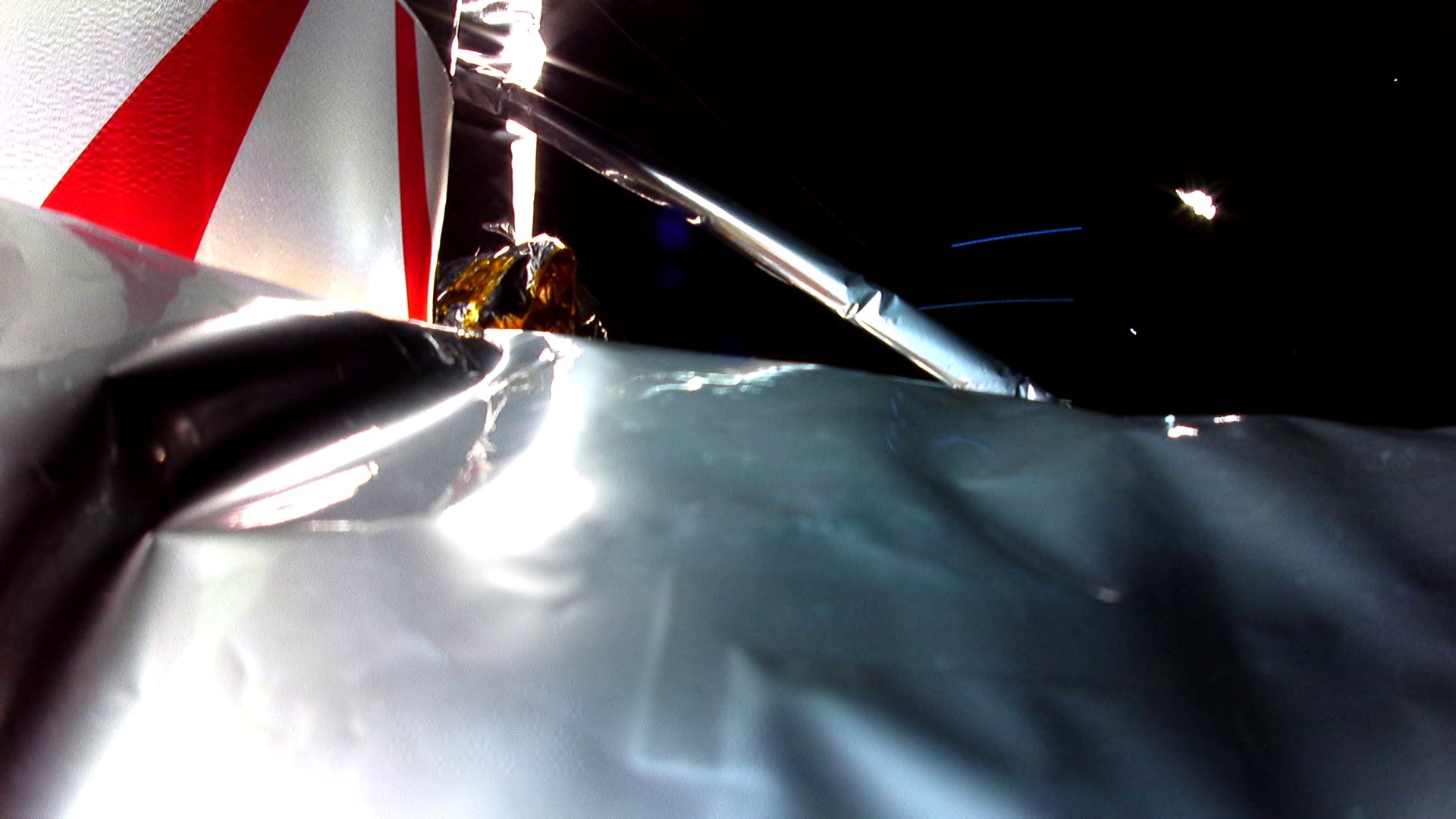Der innovative Mars-Helikopter der NASA ist endlich zu Hause


Der Mars Ingenuity Helicopter der NASA absolvierte am 26. April seinen 52. erfolgreichen Flug, trotz Kommunikationsproblemen, die dazu führten, dass der Kontakt zum Hubschrauber im Landeanflug verloren ging. (Illustration des Kreativitätshubschraubers der NASA auf dem Mars.) Bildnachweis: NASA/JPL-Caltech
Mars Helicopter successfully completed its 52nd flight, despite communication dropouts due to challenging Martian terrain. Contact with the helicopter was re-established on June 28, following a temporary blackout due to a hill blocking the signal between it and the Perseverance rover. Flight 53, scheduled for the coming weeks, will further explore Mars’s westward terrain.
The intrepid rotorcraft may head skyward again within the next couple of weeks.
The 52nd flight of NASA’s Ingenuity Mars Helicopter is now in the official mission logbook as a success. The flight took place back on April 26, but mission controllers at NASA’s Jet Propulsion Laboratory in Southern California lost contact with the helicopter as it descended toward the surface for landing.
The Ingenuity team expected the communications dropout because a hill stood between the helicopter’s landing location and the Perseverance rover’s position, blocking communication between the two. The rover acts as a radio relay between the helicopter and mission controllers at JPL. In anticipation of this loss of communications, the Ingenuity team had already developed re-contact plans for when the rover would drive back within range. Contact was re-established June 28 when Perseverance crested the hill and could see Ingenuity again.

NASA’s Ingenuity Mars Helicopter was captured by the Perseverance rover’s Mastcam-Z on April 16, not long after the rotorcraft’s 50th flight. The helicopter would soon fall silent for 63 days due hilly terrain that interrupted communications between the rover and aircraft. Credit: NASA/JPL-Caltech/ASU/MSSS
The goal of Flight 52, a 1,191-foot (363-meter) and 139-second-long flight, was to reposition the helicopter and take images of the Martian surface for the rover’s science team.
“The portion of Jezero Crater the rover and helicopter are currently exploring has a lot of rugged terrain, which makes communications dropouts more likely,” said JPL’s Josh Anderson, the Ingenuity team lead. “The team’s goal is to keep Ingenuity ahead of Perseverance, which occasionally involves temporarily pushing beyond communication limits. We’re excited to be back in communications range with Ingenuity and receive confirmation of Flight 52.”

NASA’s Ingenuity Mars Helicopter is seen in shadow in an image captured by its navigation camera during the rotorcraft’s 52nd flight on April 26. This image was finally received after Perseverance and Ingenuity were out of communication for 63 days. Credit: NASA/JPL-Caltech
Sixty-three days is a long time to wait for the results of a flight, but the data coming in indicates all is well with the first aircraft on another world. If the remainder of Ingenuity’s health checks are equally rosy, the helicopter may fly again within the next couple of weeks.
The target for Flight 53 is an interim airfield to the west, from which the team plans to perform another westward flight to a new base of operations near a rocky outcrop the Perseverance team is interested in exploring.
Mehr über Kreativität
Der innovative Mars-Helikopter ist eine Entwicklung des Jet Propulsion Laboratory (JPL), das im Auftrag des NASA-Hauptquartiers auch das Projektmanagement übernimmt. Unterstützung für das Projekt kommt vom Science Mission Directorate der NASA. Zwei wichtige Mitwirkende während der Innovationsentwicklungsphase waren das Ames Research Center der NASA im kalifornischen Silicon Valley und das Langley Research Center der NASA in Hampton, Virginia. Diese Institutionen stellten wichtige Flugleistungsanalysen und technische Anleitungen zur Verfügung. Industriepartner, darunter AeroVironment Inc. und Qualcomm und SolAero, die zum Designprozess beitragen und wichtige Fahrzeugkomponenten liefern. Lockheed Space hat die Aufgabe übernommen, das Mars Helicopter Delivery System zu entwerfen und herzustellen.
An der Spitze des Ingenuity Mars Helicopter-Projekts im NASA-Hauptquartier steht Programmleiter Dave Lavery.

„Musikfan. Sehr bescheidener Entdecker. Analytiker. Reisefreak. Extremer Fernsehlehrer. Gamer.“






